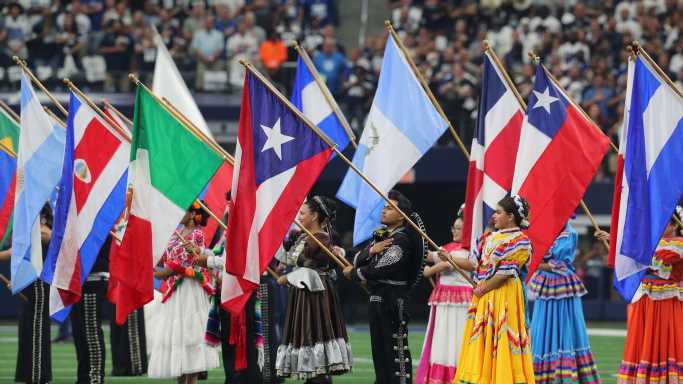How Latinos have changed the American landscape
An examination of Latinos' lives over a 20-year span found increasing diversity and major educational and economic gains, though some inequalities remain, according to a new report by the UCLA Latino Policy and Politics Institute.
The big picture: The report, which compared U.S. Census data from 2000 and 2o20, paints a picture of just how much Latinos have changed the American landscape — and how it's changed them, too.
By the numbers: Mexican Americans and Mexican immigrants still account for the largest share of U.S. Latinos (59%), but the share of people from South and Central America is quickly growing, owing largely to political and economic instability in those nations.
- There was a 550% increase in the number of Venezuelans living in the U.S. between 2000 and 2020.
- There was a 356% increase in Paraguayans.
- Hondurans and Guatemalans also saw staggering growth in the U.S.
The Latino population increased most rapidly in the American South and the Midwest during that time, according to the report.
- North Dakota and South Dakota experienced the fastest growth in the Latino population — 333% and 265%.
- South Carolina saw a 207% jump while Alabama underwent a 202% increase.
- Latinos' migration to the Midwest and South was largely a result of agricultural jobs, José G. Villagrán, a postdoctoral fellow at the University of Texas at San Antonio, told Axios, adding that many face alienation and discrimination.
The intrigue: The proportion of Latinos with a bachelor's degree or higher doubled, from 10% to 20%, according to the report.
- The Latino homeownership rate went up from 49% to 56%.
- The rate of Latinos who are U.S. citizens grew from 71% to 82%.
- "It is one of those myths we keep trying to dispel across the U.S. People in the U.S, still see Latinos are foreigners," said Rodrigo Dominguez-Villegas, director of research at the Latino Policy and Politics Institute.
The reports notes the many ways Latinos have progressed over the last two decades, but Jennie Luna, a professor of Chicana/o Studies at California State University Channel Islands, told Axios she's skeptical things have improved that much.
- Luna said she lives in an agricultural area in California's Ventura County where there are housing shortages and increased living experiences. "This eats into that data of this report."
Subscribe to Axios Latino to get vital news about Latinos and Latin America, delivered to your inbox on Tuesdays and Thursdays.
Source: Read Full Article



